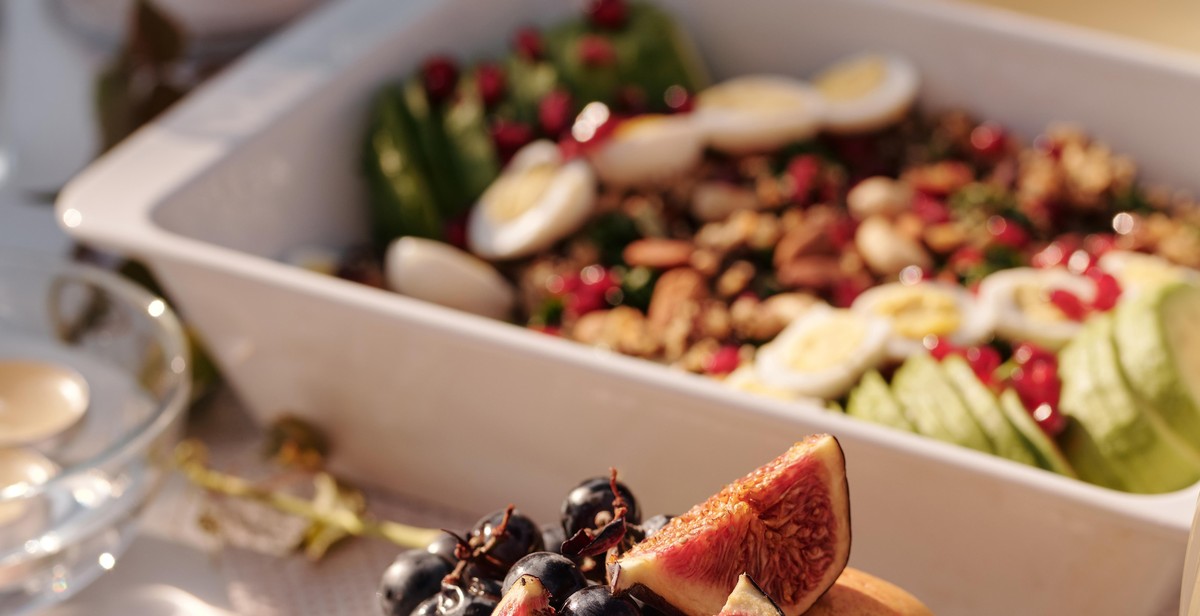How to Build a Healthy Snack Routine: Incorporating Nutritious Snacks into Your Diet
Snacking is a common habit for many people, but not all snacks are created equal. In fact, unhealthy snacking can lead to weight gain, high blood sugar levels, and other health problems. That’s why it’s important to build a healthy snack routine that incorporates nutritious snacks into your diet.
Why Building a Healthy Snack Routine is Important
Building a healthy snack routine is important for several reasons. First, snacking can help you maintain your energy levels throughout the day. When you eat nutritious snacks, you are providing your body with the fuel it needs to stay focused and productive. Additionally, snacking can help you avoid overeating during meals by keeping you satisfied between meals.
Second, incorporating nutritious snacks into your diet can help you achieve your health and fitness goals. Whether you are trying to lose weight, build muscle, or improve your overall health, eating healthy snacks can help you reach your goals faster.
Benefits of Incorporating Nutritious Snacks into Your Diet
There are many benefits to incorporating nutritious snacks into your diet. For one, nutritious snacks can help you maintain a healthy weight. When you eat healthy snacks, you are less likely to overeat during meals, which can lead to weight gain.
Additionally, eating nutritious snacks can help you improve your overall health. Nutritious snacks are typically high in vitamins, minerals, and other nutrients that your body needs to function properly. By eating healthy snacks, you can improve your immune system, boost your energy levels, and reduce your risk of chronic diseases such as heart disease and diabetes.
To learn more about how to build a healthy snack routine and incorporate nutritious snacks into your diet, continue reading our article.

Step 1: Plan Ahead
Building a healthy snack routine requires planning ahead to ensure that you have nutritious snacks readily available whenever hunger strikes. Here are three essential steps to help you plan ahead:
Create a Snack Schedule
Start by creating a snack schedule to help you stay on track and avoid grabbing unhealthy snacks on the go. Determine the best times for you to have a snack, such as mid-morning or mid-afternoon, and plan accordingly. You can also consider incorporating snacks into your meal plan, such as having a piece of fruit with breakfast or a handful of nuts with lunch.
Make a Grocery List
Once you have a snack schedule in place, it’s time to make a grocery list. Choose a variety of healthy snacks that you enjoy, such as fresh fruits and vegetables, nuts and seeds, and low-fat dairy products. Be sure to include snacks that are easy to grab and go, such as pre-cut vegetables or individual servings of hummus.
Prep Snacks in Advance
Prepping snacks in advance can save you time and ensure that you always have something healthy to snack on. Consider pre-washing and cutting fruits and vegetables, portioning out nuts and seeds, and making homemade snacks such as energy balls or granola bars. You can also prepare snacks in bulk and freeze them for later use.
| Snack | Benefits |
|---|---|
| Fresh fruit | High in fiber and vitamins |
| Veggies and hummus | Low in calories and high in nutrients |
| Yogurt and berries | Good source of protein and antioxidants |

Step 2: Choose the Right Snacks
Choosing the right snacks is crucial when building a healthy snack routine. Here are some tips to help you make the right choices:
Focus on Whole Foods
When choosing snacks, it’s important to focus on whole foods that are minimally processed. Whole foods are nutrient-dense and provide your body with the vitamins, minerals, and fiber it needs to function properly. Some examples of whole foods that make great snacks include:
- Fruits
- Veggies
- Nuts and seeds
- Whole-grain crackers
- Low-fat cheese
Choose Snacks with a Balance of Macronutrients
Another important factor to consider when choosing snacks is the balance of macronutrients. Macronutrients are the nutrients your body needs in large amounts to function properly, including carbohydrates, protein, and fat. A balanced snack should include all three of these macronutrients to help keep you full and satisfied. Some examples of balanced snacks include:
- An apple with almond butter
- A hard-boiled egg with a piece of whole-grain toast
- A handful of trail mix with nuts, seeds, and dried fruit
- A small serving of hummus with veggies and whole-grain crackers
Consider Portion Sizes
While choosing the right snacks is important, it’s also important to consider portion sizes. Even healthy snacks can contribute to weight gain if you eat too much of them. To avoid overeating, be mindful of your portion sizes and try to stick to a serving size that is appropriate for your needs. Some snacks come in pre-portioned packages, which can be helpful for controlling your intake. Otherwise, try measuring out your snacks ahead of time to ensure you’re not overeating.
| Snack | Serving Size | Calories |
|---|---|---|
| Apple with almond butter | 1 medium apple and 1 tablespoon almond butter | 200 |
| Hard-boiled egg with whole-grain toast | 1 hard-boiled egg and 1 slice of whole-grain toast | 150 |
| Trail mix | 1/4 cup | 160 |
| Hummus with veggies and crackers | 2 tablespoons hummus, 1 cup veggies, and 5 whole-grain crackers | 200 |

Step 3: Incorporate Variety
While it’s important to stick to healthy snacks, eating the same thing every day can get boring and lead to unhealthy snacking habits. Incorporating variety into your snack routine can keep things interesting and help you discover new healthy options.
Try New Snacks
Don’t be afraid to try new snacks! There are so many options out there, from roasted chickpeas to kale chips to fruit leather. Experiment with different flavors and textures to find what you like. You may even discover a new favorite snack that you never would have tried otherwise.
Incorporate Seasonal Produce
Incorporating seasonal produce into your snack routine not only provides variety, but it also supports local farmers and can be more affordable. Plus, seasonal produce is often at its peak in terms of flavor and nutritional value. Try incorporating fruits like berries in the summer or apples in the fall, and vegetables like snap peas in the spring or sweet potatoes in the winter.
Mix Up Textures and Flavors
Switching up textures and flavors can keep your taste buds interested and prevent boredom. Try pairing crunchy carrots with creamy hummus, or sweet fruit with tangy yogurt. Mixing and matching different flavors and textures can make snacking more enjoyable and satisfying.
- Try new snacks to keep things interesting
- Incorporate seasonal produce for variety and nutritional value
- Mix up textures and flavors to prevent boredom
By incorporating variety into your snack routine, you can keep things interesting and discover new healthy options. Try new snacks, incorporate seasonal produce, and mix up textures and flavors to prevent boredom and enjoy snacking!

Step 4: Make it Enjoyable
Creating a healthy snack routine doesn’t have to be boring or mundane. In fact, it should be an enjoyable experience that you look forward to each day. Here are some tips to make your snack time more fun:
Create a Snack Ritual
One way to make your snack time more enjoyable is to create a ritual around it. For example, you could set aside a specific time each day for your snack, such as mid-morning or mid-afternoon. You could also create a special space for your snack, such as a cozy corner or a designated snack area in your kitchen. By creating a ritual around your snack time, you’ll start to associate it with positive feelings and look forward to it each day.
Share Snacks with Others
Snacking doesn’t have to be a solitary activity. In fact, sharing snacks with others can make it even more enjoyable. Invite a friend or family member to join you for your snack time, or bring a healthy snack to share with your coworkers. Not only will you be able to enjoy the snack together, but you’ll also be able to bond over your shared love of healthy eating.
Take Time to Savor and Enjoy
When you’re snacking, it’s important to take the time to savor and enjoy each bite. This means slowing down and really paying attention to the flavors, textures, and aromas of your snack. By taking the time to enjoy your snack, you’ll be more satisfied and less likely to overeat or snack mindlessly throughout the day.
Overall, making your snack time enjoyable is an important part of building a healthy snack routine. By creating a ritual around your snack time, sharing snacks with others, and taking the time to savor and enjoy each bite, you’ll be more likely to stick to your healthy eating goals and feel good about your snack choices.

Conclusion
Building a healthy snack routine is an essential part of maintaining a healthy lifestyle. By incorporating nutritious snacks into your diet, you can keep your hunger at bay, boost your energy levels, and improve your overall well-being.
Tips for Building a Healthy Snack Routine
- Choose snacks that are high in fiber and protein.
- Avoid snacks that are high in sugar, salt, and unhealthy fats.
- Plan your snacks ahead of time to avoid reaching for unhealthy options.
- Keep healthy snacks readily available at home, work, and on-the-go.
- Experiment with different snack combinations to keep things interesting.
Healthy Snack Ideas
Here are some healthy snack ideas to help you get started:
| Snack | Description |
| Fruit and nut butter | Slice an apple and dip it in almond or peanut butter. |
| Greek yogurt and berries | Top Greek yogurt with fresh berries and a drizzle of honey. |
| Hard-boiled eggs and veggies | Pair hard-boiled eggs with sliced cucumbers, carrots, and bell peppers. |
| Hummus and veggies | Dip sliced veggies like carrots, celery, and bell peppers in hummus. |
| Trail mix | Mix nuts, seeds, and dried fruit for a quick and easy snack. |
Remember, building a healthy snack routine takes time and effort, but the benefits are worth it. By making small changes to your diet, you can improve your overall health and well-being.
